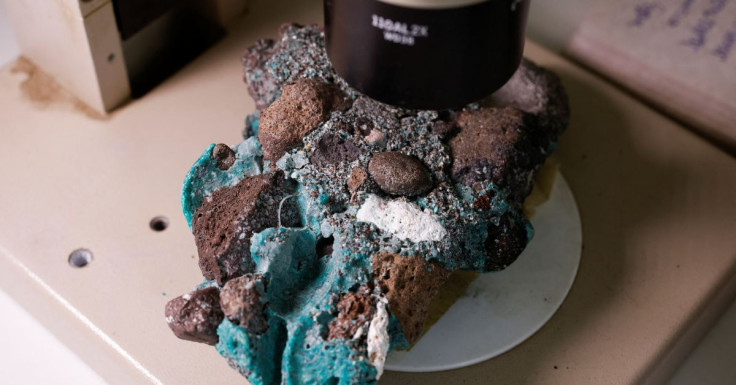
Scientists have long been intrigued by the geology of Brazil's volcanic Trindade Island, but recent discoveries of rocks made from plastic debris in this remote turtle refuge have raised concerns.
On the island, which is situated 1,140 kilometers (708 miles) from the state of Espirito Santo in the southeast, melted plastic has entwined itself with rocks, which geologists say is proof of humans' expanding impact over the earth's natural cycles.
"This is new and terrifying at the same time, because pollution has reached geology," said Fernanda Avelar Santos, a geologist at the Federal University of Parana.
The rocks known as "plastiglomerates" were subjected to chemical tests by Santos and her colleagues to determine the type of plastics present. Plastiglomerates are composed of a mixture of sedimentary granules and other debris held together by plastic, Reuters reported.
The geology of Brazil's volcanic Trindade Island has fascinated scientists for years. But the discovery of rocks made from plastic debris in this remote turtle refuge is sparking alarm https://t.co/Rtxtl0uizA pic.twitter.com/xW6Msd4cmt
— Reuters (@Reuters) March 16, 2023
"We identified (the pollution) mainly comes from fishing nets, which is very common debris on Trinidade Island's beaches," Santos said. "The (nets) are dragged by the marine currents and accumulate on the beach. When the temperature rises, these plastic melts and becomes embedded with the beach's natural material."
Thousands of green turtles, or Chelonia mydas, arrive at Trindade Island every year to lay their eggs, making it one of the most significant conservation sites in the world for these creatures.
The only people who live on Trindade are members of the Brazilian navy, which maintains a base on the island and protects the nesting turtles.
"The place where we found these samples (of plastic) is a permanently preserved area in Brazil, near the place green turtles lay their eggs," Santos said.
According to Santos, the discovery raises concerns about the impact of humanity on the planet.
"We talk so much about the Anthropocene, and this is it," Santos said, referring to a proposed geological epoch defined by humans' impact on the planet's geology and ecosystems.
"The pollution, the garbage in the sea and the plastic dumped incorrectly in the oceans is becoming geological material ... preserved in the earth's geological records," Santos added.
The green sea turtle (Chelonia mydas), also known as the green turtle, black (sea) turtle, or Pacific green turtle, is a species of large sea turtle of the family Cheloniidae.
Similar to other sea turtles, green sea turtles migrate long distances between feeding grounds and hatching beaches.
Many islands worldwide are known as Turtle Islands due to green sea turtles nesting on their beaches.
© 2025 Latin Times. All rights reserved. Do not reproduce without permission.




